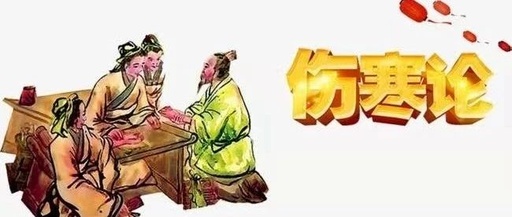The 105th pulse is floating and tight; floating indicates wind, while tight indicates cold. Wind injures the defensive qi (wei), and cold injures the nutritive qi (rong). When both wei and rong are affected, there will be pain in the joints, and one should induce sweating rather than purging.
Pre-class considerations:
1. In the “Treatise on Febrile Diseases: Differentiation of Pulses”: “A pulse that is floating and tight is called Xian (弦)”. How can we distinguish between Jin (紧) pulse and Xian pulse?
2. Why should we not purge when there is joint pain? What patterns could lead to a misdiagnosis of purging?
This section is an interpretation by Mr. Wu Qian, referencing a passage from the “Treatise on Febrile Diseases: Differentiation of Pulses” as part of the pathogenesis for sections 103 and 104. In both the “Treatise on Febrile Diseases” and the “Essential Prescriptions from the Golden Cabinet”, related pulse patterns include “floating indicates wind, rapid indicates heat”, “floating indicates wind, surging indicates qi”, and “floating indicates wind, slow indicates obstruction”. The floating pulse is the most common and easiest to grasp; when palpating, there is no need to apply much pressure, and the pulse at the cun, guan, and chi positions will respond accordingly. The floating pulse primarily indicates “wind”, which is a Yang pathogen. “Wind injures the wei”, as stated in the “Spiritual Pivot: The Meeting of Ying and Wei”: “The clear (qing) is for ying, and the turbid (zhuo) is for wei. Ying is within the pulse, while wei is outside the pulse”. Wei represents Yang qi, and rong represents Yin qi; Yang pathogens injure Yang qi, while Yin pathogens injure Yin qi. The “Spiritual Pivot: The Organs” states: “Wei qi is responsible for warming the flesh, filling the skin, nourishing the collaterals, and regulating the opening and closing”. When wei qi is harmonious, it allows the flesh to be nourished and the skin to be soft, leading to dense collaterals. The primary function of wei qi is to regulate the opening and closing; when wei qi is harmonious, the collaterals are dense. If wind evil injures wei qi, it cannot open and close normally, leading to skin and collateral dysfunction, which is the beginning of all diseases. “Tight indicates cold”; the principle of heat expansion and cold contraction also applies to pulse patterns. Cold primarily constricts, causing the pulse vessels to contract and become tense due to cold damage, while qi and blood surge outward with force, resulting in significant elasticity at the cun, guan, and chi positions. “Cold injures rong”; cold nature causes stagnation, and when qi and blood stagnate, pain occurs.
In the “Treatise on Febrile Diseases: Differentiation of Pulses”: “A pulse that is floating and tight is called Xian. Xian is shaped like a bowstring, and pressing it does not change its position. A tight pulse (Jin) is like a twisted rope that is unstable”. The state of a floating and tight pulse also applies to the Xian pulse, which requires differentiation. From the text, we can see the ancient understanding of the differences between Xian and Jin pulses. The characteristics of the Xian pulse are “shaped like a bowstring, pressing it does not change its position”; Xian refers to the bowstring made of cowhide, which is straight and has little elasticity, with a finer pulse body that does not roll when pressed. Jin refers to a rope made of hemp, which is tight and elastic, with a coarser pulse body that rebounds and rolls when pressed.
“When both wei and rong are affected, there will be pain in the joints, and one should induce sweating rather than purging”. Mr. Wu Qian notes: “This indicates the dual injury of wind and cold, and the meaning of both wei and rong being affected. Floating indicates wind evil; wind is Yang; wei is Yang. Tight indicates cold evil; cold is Yin; rong is Yin. Each injures its corresponding type. When both wei and rong are affected, there will be joint pain, which is the pulse sign of the major blue dragon’s (Da Qing Long) sweating pattern. Although there is fever and irritability, the heat is in the muscles and not in the stomach, so purging is not appropriate”. Mr. Wu Qian believes that the condition of both wei and rong being affected corresponds to the major blue dragon decoction pattern of dual wind and cold injury. Although there are symptoms of body pain, lower back pain, joint pain, and fever with irritability, the heat is superficial and not from the Yangming channel, so one should not misdiagnose it as Yangming disease and mistakenly use purging methods due to irritability.

